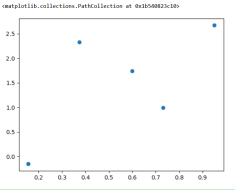Here is an example. Please note that this is just a coding example and has no physical meaning.
This example will extract the principal stresses S1 and S3, evaluate S1-S3 and scale this by a sqrt(2)/2 factor.
Code is:
def post_started(sender, analysis):# Do not edit this line
define_dpf_workflow(analysis)
# Uncomment this function to enable retrieving results from the table/chart
def table_retrieve_result(value):# Do not edit this line
import mech_dpf
import Ans.DataProcessing as dpf
wf = dpf.Workflow(this.WorkflowId)
wf.Connect('contour_selector', value)
this.Evaluate()
def define_dpf_workflow(analysis):
import mech_dpf
import Ans.DataProcessing as dpf
mech_dpf.setExtAPI(ExtAPI)
data_source = dpf.DataSources(analysis.ResultFileName)
timePointsOp =dpf.operators.metadata.time_freq_provider()
timePointsOp.inputs.data_sources.Connect(data_source)
timepoints = dpf.operators.metadata.time_freq_support_get_attribute(time_freq_support=timePointsOp,property_name="time_freqs",)
prin1 = dpf.operators.result.stress_principal_1()
prin1.inputs.data_sources.Connect(data_source)
prin1.inputs.time_scoping.Connect(timepoints)
prin3 = dpf.operators.result.stress_principal_3()
prin3.inputs.data_sources.Connect(data_source)
prin3.inputs.time_scoping.Connect(timepoints)
minus_fc = dpf.operators.math.minus_fc()
minus_fc.inputs.field_or_fields_container_A.Connect(prin1.outputs.fields_container)
minus_fc.inputs.field_or_fields_container_B.Connect(prin3.outputs.fields_container)
scale = dpf.operators.math.scale_fc()
scale.inputs.fields_container.Connect(minus_fc)
scale.inputs.ponderation.Connect(sqrt(2)/2)
dpf_workflow = dpf.Workflow()
dpf_workflow.Add(scale)
dpf_workflow.SetOutputContour(scale)
dpf_workflow.Record('wf_id', False)
this.WorkflowId = dpf_workflow.GetRecordedId()





